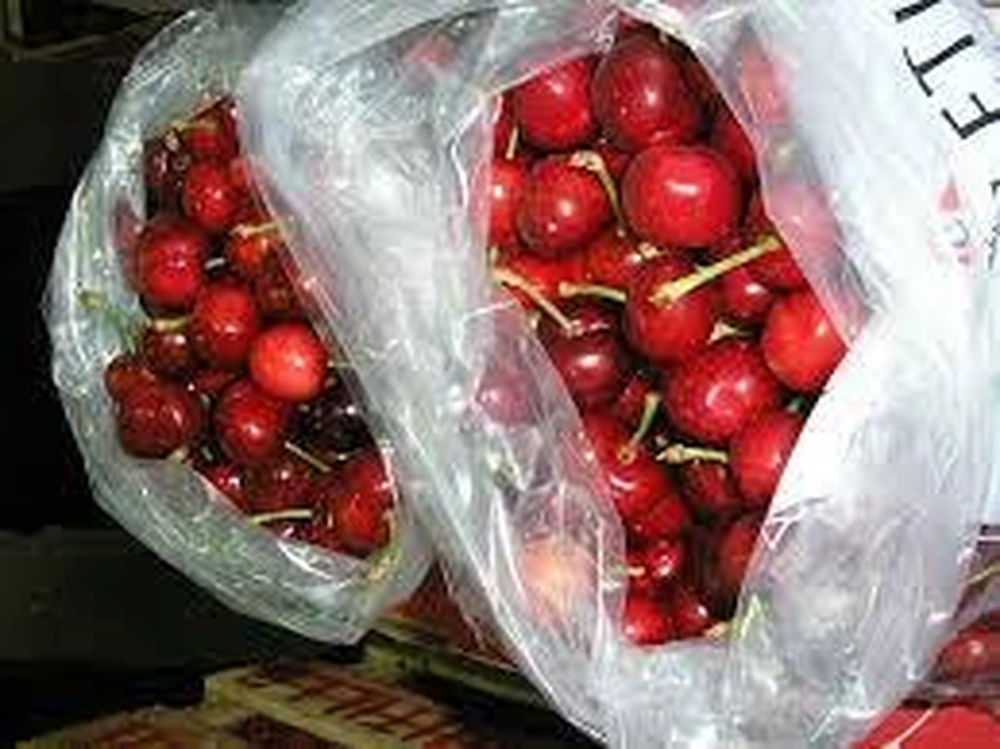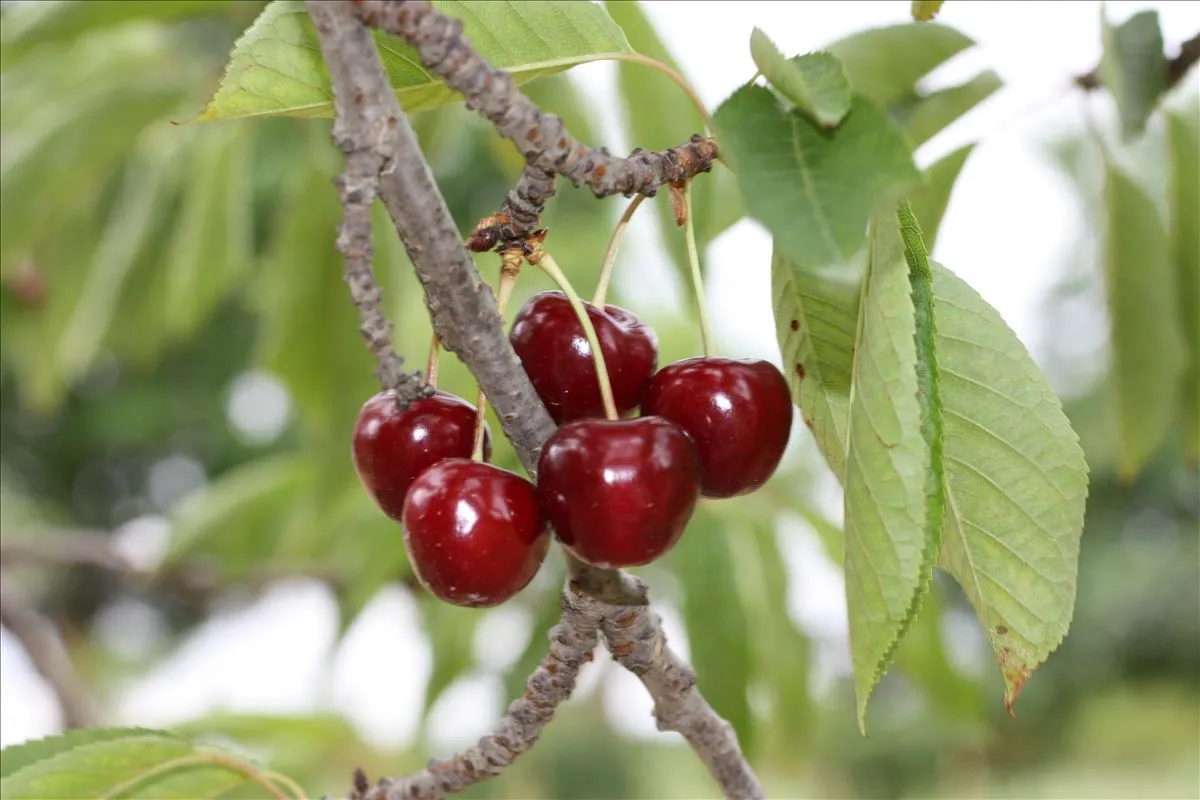Cherry cultivation is striving to transition toward more environmentally friendly production, aiming to reduce its carbon footprint and provide safer food. Although the use of organic products is increasing, cherry trees still need new technologies to fully meet their needs in a sustainable way.
The technological advances developed for military purposes during World War I were the precursors of tools that are now common. This is the case, for example, with plant protection products. "All methods of pathogen control were once biological, but everything changed after World War I, when the technology developed at the time began to be applied,” says Dr. Eduardo Donoso, founder and director of Bio Insumos Nativa.
This is how the control of phytopathogens shifted to chemical products, which offered fast and effective results in the field. After their introduction in pest management, chemical products were also used for other crop needs such as nutrition, stress management, weed control, and so on.
Returning to nature for integrated production
One aspect that was not considered at the time were the side effects of applying chemical products to the environment: residues in the soil and in food, and the resistance developed by diseases and pests. Today, for example, it is known that less than half of applied nitrogen fertilizers are actually absorbed by crops—an inefficiency with both economic and environmental consequences.
In recent years, both farmers and consumers have shown increasing global interest in food produced more sustainably, free from chemical residues and with a reduced environmental impact. In this context, organic products are regaining some prominence, aiming to complement—and in some cases replace—conventional applications.
For Chile, a country renowned for fruit exports, it is market demands that drive production methods, which is why organic products are increasingly present in agronomic programs. Even in the case of cherries—which have made Chile the world’s leading exporter—the trend is clear, although experts agree there are still challenges ahead.
Still a complement for the country's flagship fruit
“Today there is a very broad and powerful range of organic products, to the point that—in my view—there is so much information we risk getting lost in it,” says Walter Masman, cherry consultant and specialist.
The expert emphasizes that, despite this abundance of information, the rapid expansion of the organic offer—from both new research organizations and large chemical companies entering the sector—has helped keep prices competitive. “Costs fall within the normal range for an agronomic program. Today, using these products often does not lead to higher costs compared to conventional solutions,” he concludes.
The organic future of Chilean cherries
Dr. Donoso of Bio Insumos Nativa confirms there is significant involvement of chemical companies in the organic sector. “Today all chemical companies are also organic. Those who didn’t believe in organic twenty years ago now have dedicated divisions, and many spin-offs have emerged,” he says.
Marlene Ayala, professor at the Pontificia Universidad Católica de Chile, explains that the wide range of available solutions has encouraged the adoption of bioinputs by a growing number of producers. “Even if fully organic growers are still few, we’re seeing a transition toward more sustainable production systems, where bioinputs are increasingly integrated.”
Bioinputs for various types of stress
Regarding the most commonly used solutions in cherry orchards, Dr. Donoso highlights: “Algae are by far the most used component for nutrition.” To enhance stress tolerance and control Phytophthora, fungi such as Trichoderma have shown good results. “Also some Agrobacterium radiobacter for gall control. At foliar level, I believe the most important issue is the control of Pseudomonas, mainly with Bacillus,” he states.
Biologicals also offer solid support in controlling wood fungi. According to Sebastián Navarro, agronomist at PUCV and consultant for hazelnut and cherry from Chillán southward, “I believe that today the main incentive for using biologicals among producers, at least in southern Chile, is the fight against wood fungi,” where Trichoderma is one of the most widely used. As Dr. Donoso adds, “Controlling Pseudomonas and wood fungi solely with biological products is already a reality, and we have several clients doing so with excellent results.”
As for abiotic stress, microorganisms have proven very useful. During the floods at the end of 2023, when plants faced root anoxia, the application of microbial consortia helped growers cope with the unexpected. “Many companies proposed microbial consortia to stimulate root activity. The trees were stuck due to the flooding: the aerial part was active but there was no flow, so the microorganisms provided a valid alternative,” explains Dr. Ayala, referring to emergency measures to mitigate stress.
Summer and post-harvest stress
As is well known, bioinputs—especially biostimulants—deliver the best results on crops already under a certain degree of stress: their effects are not visible on perfectly healthy plants. They are therefore ideal tools under conditions of water, saline, thermal or productivity-related stress.
One of the most stressful periods for southern hemisphere cherry trees is summer, when load stress before harvest, high temperatures and low relative humidity combine, often with water deficits. “The entire physiological and photosynthetic system undergoes severe stress, and growers apply biostimulants at this time to mitigate the effects,” observes the professor.
The post-harvest period is critical for the following season and is seen by many as the beginning of the new campaign. During this phase, algae and microorganisms are used in particular, to reduce radiation stress, heat and water shortages—precisely when root activity peaks.
Validate, validate, validate
The rapid growth of supply and the emergence of companies, startups and spin-offs in the organic product landscape in Chile has raised concerns about the quality of solutions available. Some companies oversee the full chain, from research to commercialization, while others import ready-made products.
Experts stress that it is essential to validate every product before use, since what works in one area may not work elsewhere. Moreover, each season is different: good results in one year do not guarantee a product’s future success. “Every season is different, every orchard is different. Validation must take rootstock and variety into account. You may have a hot year with El Niño or a cold one with La Niña, so you need at least three seasons of trials,” explains Ayala.
Dr. Donoso also underscores the importance of validation, considering climatic specificities. “We had fifteen years of drought, during which some products worked very well. Then came two El Niño years, and they stopped working. We need to validate both in the field and under controlled conditions, where pathogen pressure can be simulated.”
“The future is organic”
Whether to meet consumer demand for safer cherries or to replace banned active ingredients, the future of production is turning green. Masman says that organic is already a reality, and that farmers are adapting, even if “it is a slow process.”
These products have become so successful and sought-after that they are now standard in agronomic programs. “Of course, there are areas where, due to prevalent diseases or climatic conditions, more can be done. The same goes for soil, where we may need specific products to stimulate root development.” Masman notes that his program also includes biocontrol products for diseases, but clarifies: “It’s not the only way: chemical products exist, but there is also this organic wing, which is here to stay.”
Marlene Ayala adds that organic solutions help reduce carbon footprints and fossil fuel usage. “Integrating all these aspects to build a sustainable system in transition is the message we want to send to the final consumer. We want to tell them that the system is increasingly less extractive, less polluting and destructive, and that we are seeking balance.”
Dr. Donoso views the development of organic products for Chilean cherries with optimism and believes in a “biological future.” He adds that, “considering development costs and market access, it is likely that over the next twenty years at least half—or more than half—of new marketed products will be organic.”
Consuelo Schwerter Téllez and Miguel Patiño
Redagricola
Image source: Redagricola
Cherry Times – All rights reserved












